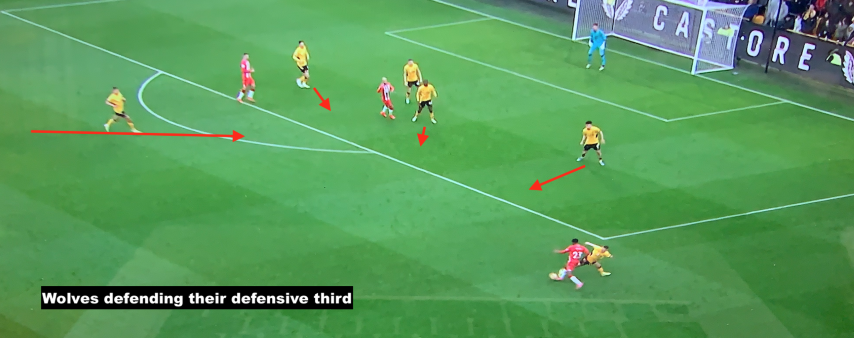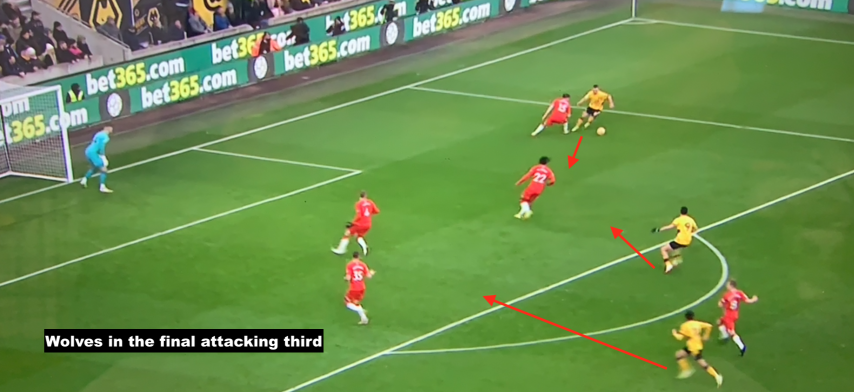By Soren Schamberg
The last few match days in the Premiere League have seen Wolverhampton Wanderers come away with a decent number of points. Bruno Lage’s side have earned 13 out of the last possible 15 points in the table, placing them in 8th place and just 2 points behind Tottenham and Arsenal.
What has been key to their recent form is the Wolves’ ability to utilize the 3-4-3 system with good effect, keeping a high press on their opponents and taking advantage of set pieces.
To begin, the line up will usually read 3-4-3 or a 3-5-2 which would be their attacking and defending formations respectively.
Using a 3-4-3 effectively places players throughout the pitch to which there can be adequate cover both moving forward and coming back on defense and incorporating a high press in the opponents half, means that a majority of the team is able to maintain possession with numerous passing options both forwards and backwards and enough numbers to collapse on the opponent when transitioning from attack to defense and win the ball quickly and high up the pitch.
Once in control, the players can use possession play to move the defense and create or find space for opportunities on goal.

Defensively, Wolves are able to outnumber their opponents and force errors from their opposition or intercept passes with enough space in the defensively third to mount a counter attack or decide to build up from the back.

Once in possession, their build up play focuses on creating overloads in the outside channels to stretch their opponents defense to create space for their attacking players to either dribble onto the defense, win a free kick in a dangerous area or place a cross into the 6 yard box looking for a header or tap in from close.

The 3-4-3 formation can make for an effective, balanced system of play over the whole of the pitch.
By Soren Schamberg


